1,071 news posts

Frontiers news
15 Jul 2022
Open science to meet the public’s appetite for accountability, transparency, and trust
On 15 July 2022, Stephan Kuster, head of public affairs at Frontiers, gave a speech at the closing reception of the EuroScience Open Forum, Europe’s largest interdisciplinary science conference. Thank you, Professor Breedveld. Good evening. My name is Stephan Kuster. I am head of public affairs at Frontiers. I joined Frontiers because we are a fully open access, research publisher whose mission is clear and simply put. We want to make all science open. We believe that global, existential threats call for scientific breakthroughs at pace, based on full and immediate access to the latest research. In short, science that is open to the many, not just the few. We are delighted to support the forum in this, its tenth year. The ESOF team has done a fantastic job bringing us all together and framing the conversation. It has asked how scientific endeavour can cross borders, between disciplines, geographies and worldviews. And it has challenged us to engage with the public, to shape policy. Now the scientific community in recent years has made enormous progress on both these fronts. Not least in our collective response to the pandemic. But success is not guaranteed. Too often, science has been captured by […]
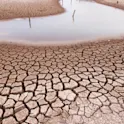
Climate action
15 Jul 2022
Is declaring a climate emergency enough to stop the climate crisis? What we can learn from the Covid-19 pandemic
By Jordi Mazon, David Pino, and Mireia Vinyoles Image: Piyaset/Shutterstock.com Dr. Jordi Mazon is professor of meteorology at the Department of physics in the Technical University of Catalonia (BarcelonaTech) and teaches higher-level physics in the international baccalaureate in Aula higher school in Barcelona. In addition, he is currently Deputy Mayor of energy transition, mobility, and city cleaning management in Viladecans, a municipality of the metropolitan area of Barcelona. His research is focused on several topics of the atmospheric physics, the numerical simulation of coastal fronts, and severe meteorological events. Now, he explains what lessons from the Covid-19 pandemic we can apply to our fight against the climate crisis. If someone looks up the definition of emergency in any dictionary (for example in the Cambridge Dictionary), the following description can be read: “something dangerous or serious, that happens suddenly or unexpectedly and needs fast action in order to avoid harmful results for people or properties”. Keeping in mind the recent declaration of the state of emergency due to the climate crisis by many scientists, administrations, and institutions worldwide, it is clear that fast actions must be taken to avoid harmful results for human societies and the Earth’s ecosystems. Accepting the declaration […]
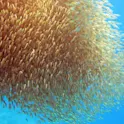
Featured news
14 Jul 2022
‘Maths’ genes used by fish to count may help us treat human neurodevelopmental diseases
By K.E.D. Coan, science writer A recent review shows that fish estimate quantities in a similar way as many other vertebrate animals. By pinpointing the cells and even genes that make basic maths possible, this research could provide a starting point for treating human neurodevelopmental diseases that impair number processing skills. Fish are helping researchers track down the origins of how brains compute maths, reports a review in Frontiers in Neuroanatomy. An international team has reviewed more than 200 publications, which together show that fish perceive quantities using similar parts of their brains as mammals and birds. Research is still underway to find the specific brain circuitry that makes number processing possible, but these findings could eventually help treat human diseases that impair the ability to do maths. “Fish are on par with other animals in possessing a sense of quantity,” said corresponding author Prof Giorgio Vallortigara of the University of Trento in Italy. “There are species, most notably the zebrafish, that are ideal models for studying the molecular and genetic bases of the sense of quantity. This could have important implications for neurodevelopmental diseases affecting number cognition, such as developmental dyscalculia, which impairs maths skills in up to 6% […]
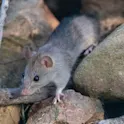
Featured news
13 Jul 2022
Rats can learn to navigate by watching their friends, helping us learn more about our own ‘internal GPS’
By Suzanna Burgelman, Frontiers science writer Image credit: Jesus Cobaleda/Shutterstock.com Researchers are one step closer to understanding the ‘internal GPS’ of animals and humans, by investigating whether rats can learn spaces just by observation. In a new study published in Frontiers in Behavioral Neuroscience, the researchers show that rats do not need to physically explore an environment to learn about a specific location; simply observing another rat is sufficient. Learning by observation has been reported in invertebrates (for example in bees), birds, fish, and mammals. Learning new tasks and environments is critical to the survival and well-being of an individual. “Learning by observation is the most common form of learning from school to daily life,” said author Dr Thomas Doublet, of the Norwegian University of Science and Technology. ► Read original article► Download original article (pdf) Brain maps Research has shown that animals and humans can navigate distances and spaces thanks to the formation of cognitive maps. Functional cell types have been suggested that underlie cognitive mapping processes in the brain, among them grid cells, border cells, head direction cells, and place cells. A place cell, for example, is a neuron in the hippocampus that becomes active when an animal enters a […]

Frontiers news
11 Jul 2022
Camilla Foged – Finding your own way
Women in Science speaks with Camilla Foged, a vaccine design and delivery expert, professor, and head to a leading research group in innovative and high-quality nanomedicine formulations.

Featured news
08 Jul 2022
Building blocks for RNA-based life abound at center of our galaxy
By Mischa Dijkstra, Frontiers science writer Scientists here study the spectra from G+0.693-0.027, a molecular cloud near the center of the Milky Way. They detect a range of nitriles, key building blocks for RNA, including cyanoallene, propargyl cyanide, cyanopropyne, and possibly cyanoformaldehyde and glycolonitrile, none of which had previously been found in G+0.693-0.027. They conclude that nitriles are among the most abundant chemical families in the universe, which lends support to the ‘RNA world’ theory of the origin of life on Earth, and possibly elsewhere in our galaxy. Nitriles, a class of organic molecules with a cyano group, that is, a carbon atom bound with an unsaturated triple bond to a nitrogen atom, are typically toxic. But paradoxically, they are also a key precursor for molecules essential for life, such as ribonucleotides, composed of the nucleobases or ‘letters’ A, U, C, and G, joined to a ribose and phosphate group, which together make up RNA. Now, a team of researchers from Spain, Japan, Chile, Italy, and the US show that a wide range of nitriles occurs in interstellar space within the molecular cloud G+0.693-0.027, near the center of the Milky Way. The results are published in Frontiers in Astronomy and […]
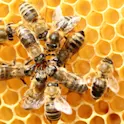
Engineering
07 Jul 2022
Bees’ ‘waggle dance’ may revolutionize how robots talk to each other in disaster zones
By Conn Hastings, science writer Image credit: rtbilder / Shutterstock.com Honeybees use a sophisticated dance to tell their sisters about the location of nearby flowers. This phenomenon forms the inspiration for a form of robot-robot communication that does not rely on digital networks. A recent study presents a simple technique whereby robots view and interpret each other’s movements or a gesture from a human to communicate a geographical location. This approach could prove invaluable when network coverage is unreliable or absent, such as in disaster zones. Where are those flowers and how far away are they? This is the crux of the ‘waggle dance’ performed by honeybees to alert others to the location of nectar-rich flowers. A new study in Frontiers in Robotics and AI has taken inspiration from this technique to devise a way for robots to communicate. The first robot traces a shape on the floor, and the shape’s orientation and the time it takes to trace it tell the second robot the required direction and distance of travel. The technique could prove invaluable in situations where robot labor is required but network communications are unreliable, such as in a disaster zone or in space. Honeybees excel at […]

Featured news
06 Jul 2022
Prof Jeff Camkin: ‘The biggest misconception is that open science is just for researchers and academics. It’s not.’
Prof Jeff Camkin Prof Jeff Camkin, of the University of Western Australia, is a water and sustainable development specialist. He is co-founder and editor-in-chief of the World Water Policy Journal – a platform for the world’s emerging water leaders and thinkers. Jeff’s focus is on promoting the connection between policy, research, and community connectivity through transdisciplinarity, better utilization of local knowledge, more effective collaboration, and capacity building. Today, he tells us about the importance of democratizing science worldwide and implementing open science with the help of UNESCO. What inspired you to become a researcher? Frankly, I’m not really inspired to be a researcher, per se. Perhaps 20 years ago, I realized that what I wanted from my career was to understand water and natural resource management from as wide a range of viewpoints as possible to be more effective in influencing positive change. Sometimes the best way to do that is through research, sometimes it’s by directly advising decision-makers, and other times by working more closely with community or industry stakeholders. So, my career has been a mix of activities, ranging from positions in government agencies responsible for water and fisheries policy development, providing policy advice directly to ministerial decision-makers, […]

Featured news
05 Jul 2022
Zapping our tastebuds can help reduce our salt intake
By Peter Rejcek, science writer Image: YAKOBCHUK VIACHESLAV/Shutterstock.com Most people consume too much salt in their diet, leading to high blood pressure and other health issues. Researchers have discovered a novel way to enhance the saltiness, and even potentially the savoriness, of low-sodium food using electrical stimulation of the tongue through a chopstick-shaped utensil. The concept has applications in other fields, such as stimulating taste as part of a virtual reality experience. An estimated 2.5m deaths each year could be prevented globally if individuals cut back their salt consumption to the recommended daily intake of less than five grams, according to the World Health Organization (WHO). Now, Japanese researchers may have found a healthier way for people to enjoy the full flavor of salty foods while still adhering to a low-sodium diet. Scientists at Meiji University and Kirin, a Japanese food and beverage company, have developed a chopstick-like device that uses a weak electrical charge to stimulate how the tongue experiences saltiness. The research is published in the journal Frontiers in Virtual Reality. Previous studies have described how introducing a weak electrical current to the tongue can affect the charged ions that make up sodium chloride to either inhibit or […]
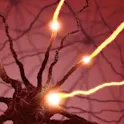
Featured news
28 Jun 2022
Robotic arms connected directly to brain of partially paralyzed man allows him to feed himself
By Peter Rejcek, science writer Image: Shutterstock.com Recent advances in neural science, robotics, and software have enabled scientists to develop a robotic system that responds to muscle movement signals from a partially paralyzed person relayed through a brain-machine interface. Human and robot act as a team to make performing some tasks a piece of cake. Two robotic arms – a fork in one hand, a knife in the other – flank a seated man, who sits in front of a table, with a piece of cake on a plate. A computerized voice announces each action: “moving fork to food” and “retracting knife.” Partially paralyzed, the man makes subtle motions with his right and left fists at certain prompts, such as “select cut location”, so that the machine slices off a bite-sized piece. Now: “moving food to mouth” and another subtle gesture to align the fork with his mouth. In less than 90 seconds, a person with very limited upper body mobility who hasn’t been able to use his fingers in about 30 years, just fed himself dessert using his mind and some smart robotic hands. A team led by researchers at the Johns Hopkins Applied Physics Laboratory (APL), in Laurel, […]
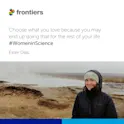
Frontiers news
27 Jun 2022
Ester Dias – Choose what you love because you may end up doing that for the rest of your life
In celebration of World Ocean Day, we speak with marine scientist Dr Ester Dias, who is currently a research assistant at the Interdisciplinary Centre of Marine and Environmental Research in Portugal, focusing on coastal and estuarine species and their ecosystems.

Health
24 Jun 2022
Dr Deborah Nadal: Why a rigid rabies elimination strategy can struggle to take hold in a world of local complexities
Dr Deborah Nadal. Image: Rebecca Rodrigues Dr Deborah Nadal is an affiliate researcher at the University of Glasgow, where she works on rabies-related projects, and a consultant for the Department of Control of Neglected Tropical Diseases of the World Health Organization (WHO). Her PhD research on the co-existence between people, free-roaming animals, and the rabies virus in urban India got turned into an award-winning book. Her two main research areas are health and animals (human and non-human), with a particular interest in how different species can contribute to each other’s physical, mental, and social wellbeing, especially in impoverished settings. Now, she tells us more about the need to understand local perceptions of rabies to tackle this deadly disease efficiently and sustainably. What inspired you to become a researcher? Becoming a researcher was not in my plans until rather recently. When, as a pre-school kid, I was asked what my job would be, I always replied “Licia Colò”. She is an Italian TV hostess famous for travel and animal shows. To the young me, she was the job. Then, as a school kid, the veterinary profession was my dream. In fact, my book is dedicated to this dream. But during my school years, my fascination with India started to grow as well and, despite the skepticism […]

Frontiers news
22 Jun 2022
Research publisher Frontiers at the 10th EuroScience Open Forum
Open access publisher Frontiers will be taking part in the EuroScience Open Forum, the largest scientific meeting in Europe, in pursuit of interdisciplinary and intersectional debate on scientific culture, research collaboration, and innovation policy.

Open science policy
21 Jun 2022
It is not transformation if nothing changes
A Frontiers white paper on the impact of transformative agreements in the transition to open access publishing
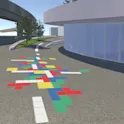
Featured news
17 Jun 2022
Colorful urban environments, even if just in virtual reality, promote wellbeing
By Conn Hasting, science writer Colorful virtual reality cityscape. Image credit: A. Batistatou, F. Vandeville, and Y.N. Delevoye-Turrell Urban environments can be drab and stressful, but introducing vegetation or colorful designs could improve the wellbeing of city dwellers. A new study investigated the potential of these simple interventions using a virtual reality simulation. It found that green vegetation was pleasurable for volunteers, whereas colorful designs increased curiosity and fascination. The virtual methods could be useful for urban planners in testing new methods to improve wellbeing. Drab urban environments tend to increase our stress, whereas nature can soothe the soul, but how do you get the best of both? One option is to increase color and vegetation in cities, but finding the best approach can be tricky. A new study in Frontiers in Virtual Reality tested the effects of vegetation and colorful patterns in an urban environment. Employing virtual reality, the study found that green vegetation caused volunteers to walk more slowly, while also increasing their heartrate, indicating a pleasurable experience. Meanwhile, colorful patterns increased alertness, fascination and curiosity. The study illustrates the potential of simple interventions to improve the lives of urbanites, and also the power of virtual reality […]